Flyzone Tidewater
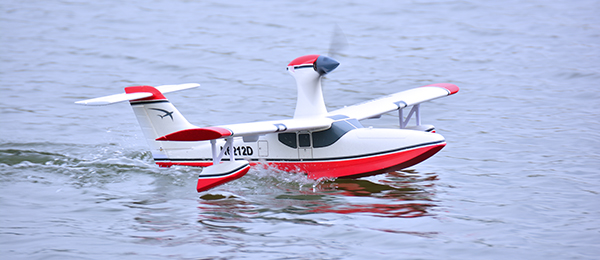
Article and flight video by Joe Hass Captain this seaplane. Digital exclusive review and flight video
Flying off water is cool—not only because of the breezes off of the water, but also the overall experience. In the past, aircraft needed to be built before they could be flown. Even in the past few years, ARF aircraft needed a flight box. Today, however, modern technology and materials, coupled with electric power, have made entering the world of float flying nearly instantaneous. Also, your power system can fit in your pocket!
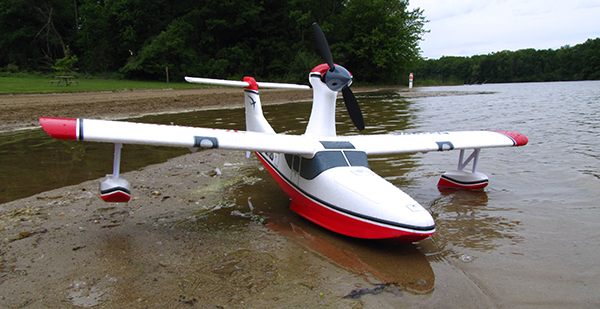
The Flyzone Tidewater from Hobbico is a marvelous flying airplane that can be put together in roughly the same amount of time that it takes to charge the three-cell, 2,200 mAh LiPo used to power it. Two versions of the Tidewater are available. The RTF version has everything you need including a Tactic TTX404 transmitter, ElectriFly 3S 2,200 mAh LiPo battery, and a smart charger. The transmitter-ready version (TX-R) allows you to use your Tactic-compatible transmitter or AnyLink 2.4 GHz Radio Adapter and your own battery and charger. Either way, you will be in the air fast. Everything is well packaged in plastic bags.
Assembly
Begin by attaching the horizontal stabilizer and elevator. Alignment pins keep things straight, and a bolt holds the stabilizer to the top of the rudder. Although the pictures in the 20-page manual show connecting the elevator pushrod to the outer hole of the servo arm, consider going in one hole to slightly reduce elevator throw, especially if you are using a transmitter without exponential. Make sure you retighten the connector on the elevator control horn after setting up neutral elevator. Although the next step in the instructions calls for the motor pod to be attached to the wing, consider temporarily connecting the motor wires to the ESC to ensure that the motor correctly spins. After the connections are correct, label the ESC wires to match the colors from the motor pod. I used a mini marker to label the heat-shrink tubing on each ESC wire. Two bolts hold the motor pod to the wing. Attaching the tip floats to the wing is done by snapping them in place. Attach the motor wires to the ESC following the labels you added. One bolt securely holds the wing to the fuselage. The hatch has an easy-to-use handle, hooks in front, and is held in place with magnets. No water has ever gotten inside my Tidewater. Mount the hook-and-loop fastener to the raised center section in the hatch to hold the LiPo.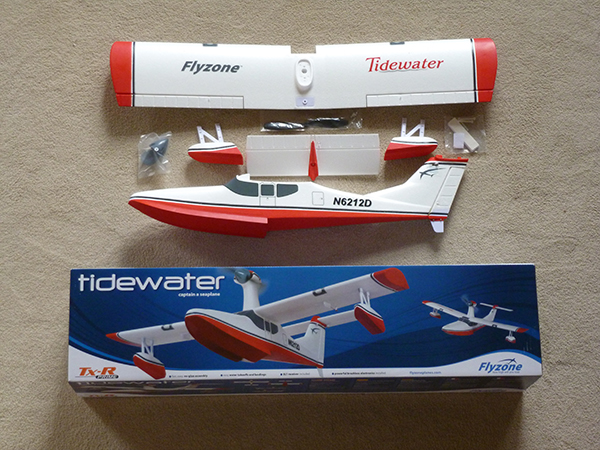 Kit contents out of the box.
Kit contents out of the box.
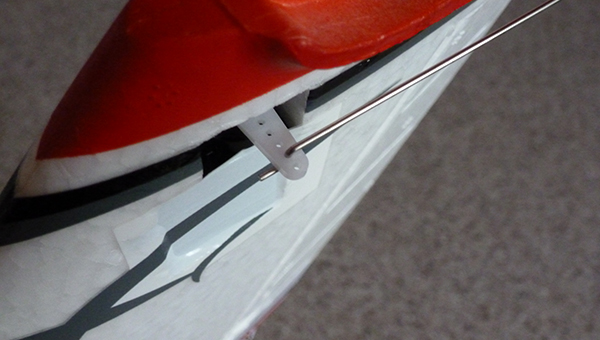 The supplied elevator pushrod with Z bend installed before attaching the horizontal stab and elevator.
The supplied elevator pushrod with Z bend installed before attaching the horizontal stab and elevator.
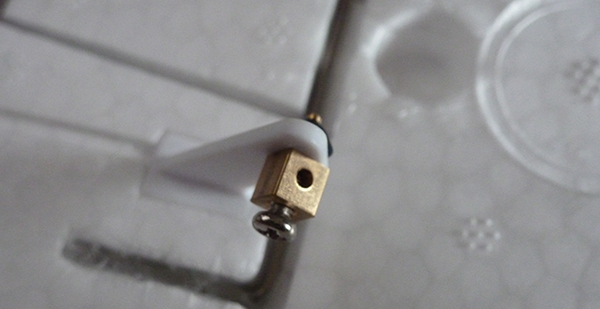 The pushrod connector on the elevator control horn is preinstalled.
The pushrod connector on the elevator control horn is preinstalled.
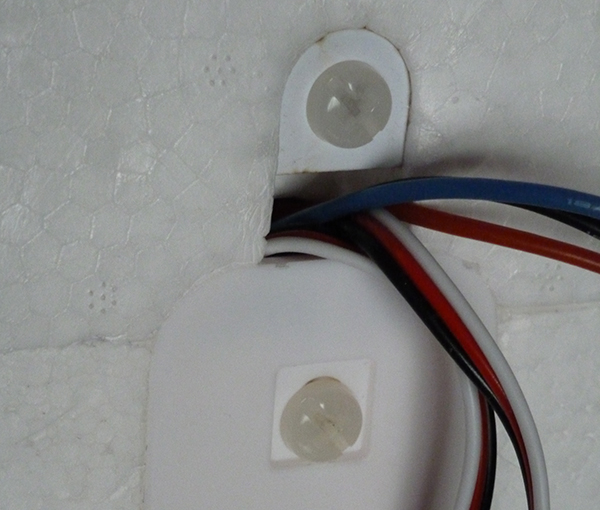 Two bolts hold the motor pod in place. Motor wires easily pass through wing.
Two bolts hold the motor pod in place. Motor wires easily pass through wing.
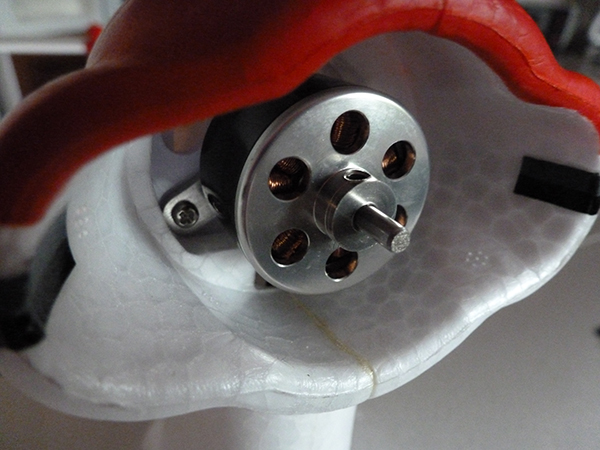 The 1300 KV outrunner comes preinstalled
The 1300 KV outrunner comes preinstalled
The instructions come with setup directions for the Tactic 404 transmitter for the RTF version. The Tactic 650 was used for this review and allowed high and low rates and exponential to be used. Remember that after everything is set up to rebind the receiver to the transmitter. This ensures that all failsafe functions are correctly set. The 2,200 mAh LiPo centered in the hatch area provided a perfect CG.
Flying
The first flights of the Tidewater occurred indoors in late March at the Ultimate Soccer Arenas in Pontiac, Michigan. The Tidewater was placed on the artificial turf and with the throttle slowly advanced, and took off without a problem.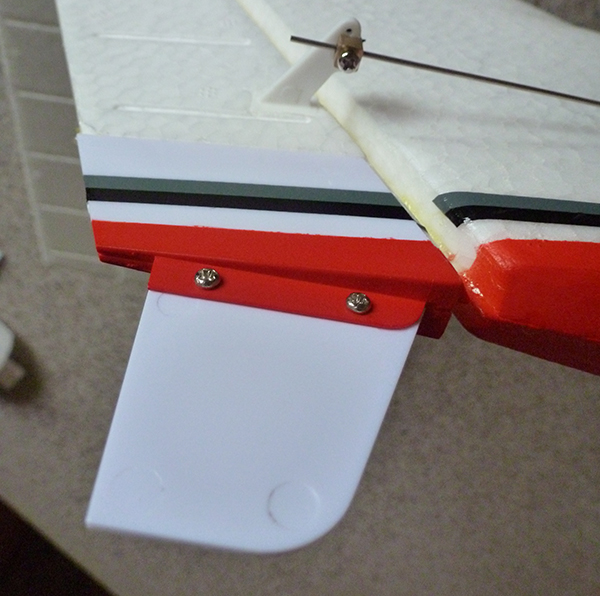 The water rudder is the perfect size and can be easily removed for flying off of a hard surface.
The water rudder is the perfect size and can be easily removed for flying off of a hard surface.
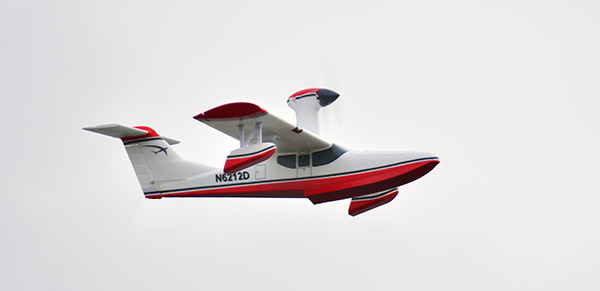
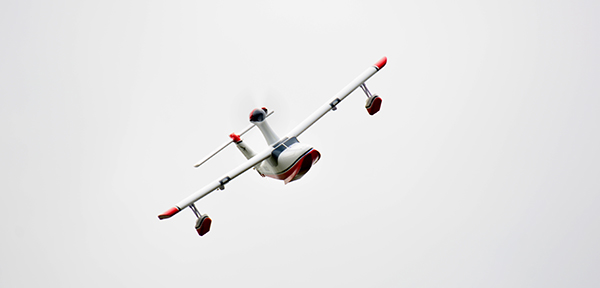

The next flights were outdoors but again were takeoffs from grass or hand launches. If you are flying off of a hard surface, consider removing the water rudder. It is held on by two small bolts. Removing the water rudder is easier on the rudder hinge. I had to wait for better weather to fly it off water, but was worth it. The Tidewater is fantastic. It handles well on the water thanks to collaboration between the Flyzone team and the AquaCraft team to make the hull perform similar to a boat. Also, with the water rudder there is plenty of rudder authority to taxi into the wind. Slowly advancing the throttle gets the Tidewater on step and smoothly in the air. Aerobatics are not typically included in the description of amphibians. The Tidewater changes that definition. Loops from level flight are easy. Rolls are axial and four-point rolls are easily accomplished.

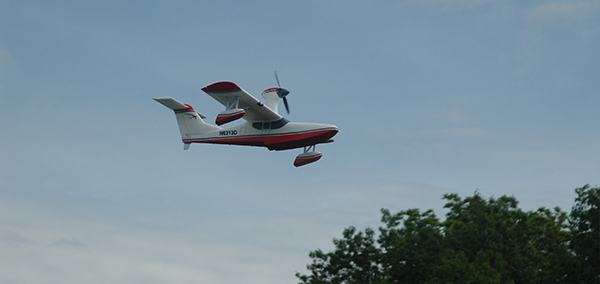 Beautifully stable in flight yet remarkably aerobatic.
Beautifully stable in flight yet remarkably aerobatic.
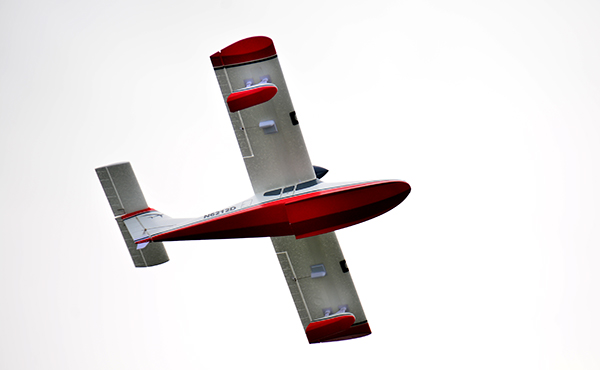
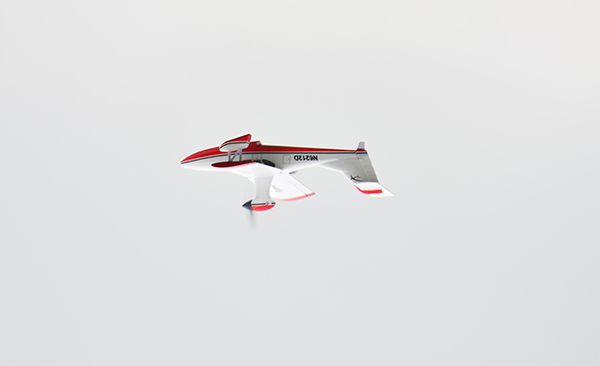
The big test was inverted flight. Rolling it upside down was quick, straight, and level, only requiring some down-elevator. Everything about the flight was rock solid. After approximately five minutes, it was time to try a few water landings. Flying a rectangular pattern, I got it lined up on the water runway. By slowly reducing the throttle, I established a smooth descent. Always leave some power on through touchdown. A touch of up-elevator brings up the nose shortly before contact with the water and results in a fantastic landing. Flights in the five-minute range only used 600 mAh of the battery’s capacity. A fresh battery was installed and it was time to try some touch-and-gos. The Tidewater makes this easy. Keep a little power on as the hull touches the water and it will gently glide on the surface. Beautiful! Landings became so easy that I jokingly told spectators that it was equipped with an “auto land” feature.
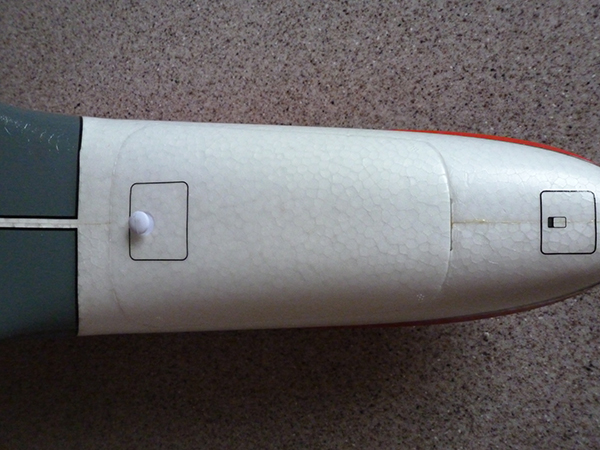 The hatch hooks in front and is held in place with a magnet in the rear. The handle on the hatch allows for easy battery swaps.
The hatch hooks in front and is held in place with a magnet in the rear. The handle on the hatch allows for easy battery swaps.
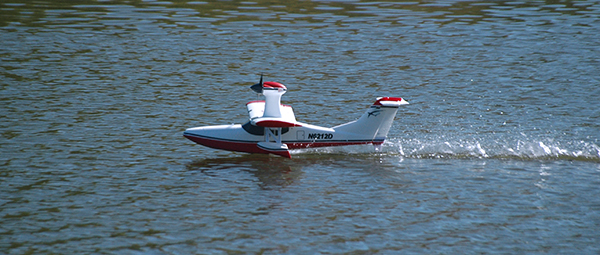 Touch-and-gos are a breeze. Work the throttle smoothly.
Touch-and-gos are a breeze. Work the throttle smoothly.
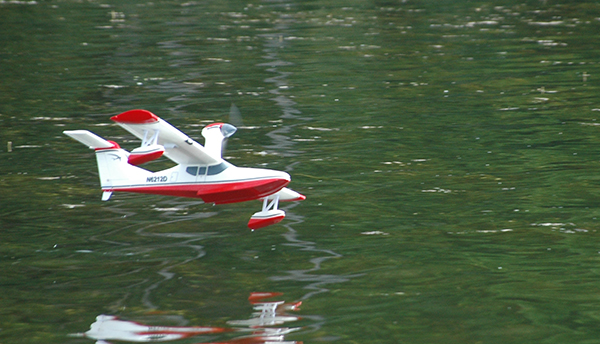 Low altitude tight turns are easy to accomplish.
Low altitude tight turns are easy to accomplish.
The Tidewater does not need smooth water or air to fly well. I have flown it in 15-knot winds and considerable chop on the water’s surface. This is not a fair-weather aircraft. Regardless of the conditions, I have never seen water in the hull. I have touched up scratches with Tamiya America paints.
Specifications
Model type: Electric amphibian Skill level: Beginner builder; intermediate pilot Wingspan: 41.5 inches Wing area: 310 square inches Wing loading: 14.4 ounces per square foot Length: 36 inches Weight: 30-32 ounces Radio: Four-channel required Battery: Three-cell 2200 mAh Price: $169.98 Tx-R; $259.98 RTFTest Model Details
Radio system: Tactic TTX650 transmitter; Tactic TR624 receiver, four preinstalled microservos; ElectriFly 2200 mAh 3S battery Motor: 28-30-1300 kV brushless outrunner (included); ElectriFly 9 x 4.5 propeller (included) ESC: 30A (included) Ready-to-fly weight: 30.6 ounces Flight duration: 8+ minutes Construction: AeroCell Foam and plasticPluses
• Easy to build and fly. • Looks great. • Excellent water handling.Minuses
• Decals are fragile.Conclusion
Flying off water is a great change of pace and rewarding. The Flyzone Tidewater provides an easy-to-assemble and easy-to-fly aircraft to help you quickly get your water wings. Give it a try!—Joe Hass [email protected]










7 comments
Has more than enough power
My first water plane - Super
Tidewater, my first seaplane
Dead Stick
Look at 1:08 minutes
Great Flyer But Lacks Build Quality
Motor stutters
Add new comment